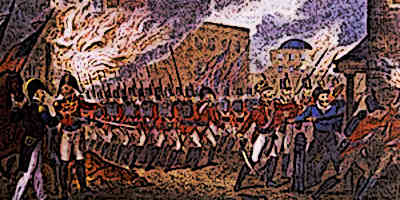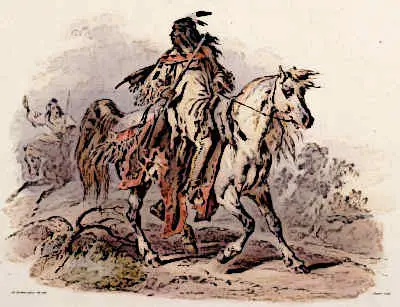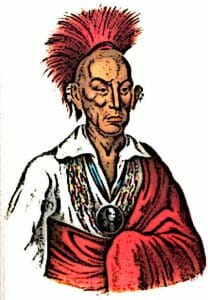Black Hawk
Black Hawk was a leader of the Native American Sauk tribe. He took a part in the War of 1812 on the side of the British forces.
Later, he continued to support the British and fight against American forces. His activities led to the Black Hawk War of 1832. He was later captured and became a veritable celebrity in his final years.

Role during the War of 1812
In 1812, war broke out between British forces in North America and the newly-born United States. British relied heavily on the support of Native American allies in this war.
Black Hawk emerged as a major Native Indian leader during this war.
He was granted the rank of brevet Brigadier General by the British. He was also given the command of the Native Indian allies that fought on the side of the British.
Black Hawk fought in a number of notable battles during the war. However, Britain and its allies suffered heavy losses in the war and Black Hawk despaired over this. In 1816, Black Hawk finally signed a peace treaty that ended his involvement in the war.
The Black Hawk War
In the early 19th century, United States was expanding. As a result, Native Indian tribes were forced to relocate. Black Hawk’s Sauk tribe was forced west of Mississippi River through a treaty which he and others disputed.

In 1832, Black Hawk led a band of warriors and their families across the Mississippi River and into Illinois. This led to the outbreak of the Black Hawk War.
Result and Aftermath of Black Hawk War
In the war, the Indian warriors under Black Hawk fought the Illinois militiamen. More U.S. soldiers joined the war as it dragged on from April 1832 to August 1832. In August, the decisive fight was fought at the Battle of Bad Axe.

This battle led to a large number of Native American deaths and is often dubbed a massacre. The war ended with the defeat of Black Hawk’s band. He later agreed to surrender and was placed in captivity.
Tour of the United States
After being taken captive, Black Hawk was transported eastwards across the United States. This was done on the orders of President Andrew Jackson. Jackson wanted to impress the Indian leader with the might of the United States.

He also hoped to show off the captive to the American public. Black Hawk and other captive Indian leaders were met with large crowds everywhere they went. After the tour, Black Hawk was briefly detained and then released.
Autobiography and Fame
In 1833, Black Hawk narrated his life story to Antoine Le Claire while still in captivity. LeClaire turned it into an autobiography. With the Black Hawk War still fresh in American minds, the book was immensely successful and became a bestseller.
It also granted Black Hawk a sort of celebrity status, being the first Native Indian to have his autobiography published in the U.S.
Later Days and Death
Black Hawk died in 1838, soon after his tour of the east and the publication of his autobiography. Towards his later days, he advocated reconciliation between the Native Americans and the white Americans.
He remains one of the most popularly recognized Native Indian figures in American history.

